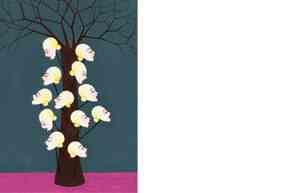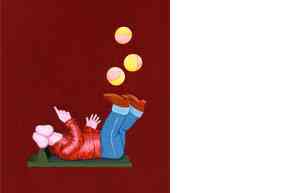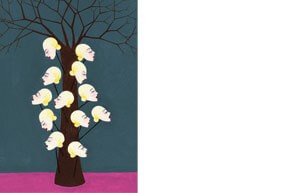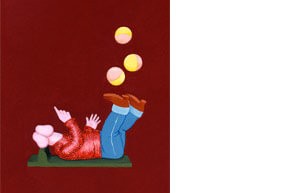Ingrid Mourreau
The Associate Artists program has only existed since 2023, but when publishing our archives online (in 2025), we chose to include former Residents of Astérides and Triangle France who, living in Marseille, would today be considered as such.
Ingrid Mourreau is an Astérides Resident in 1995, 1996 and 2003. The archives of Triangle-Astérides do not allow for the determination of the exact dates or the duration of this residency in 1995, 1996 and 2003.
Ingrid Mourreau was born in 1969 in Strasbourg (FR), she lives and works in New York (US)
This patient, highly constructed work builds an obsessive body of drawings, paintings, and models, whose common denominator is the artist’s ability to immerse herself in fantasy and sensuality through an extremely rigorous and tense process of elaboration. From this ever-renewed invention of a theater of cruelty—where overt provocation meets the monomaniacal lucidity of an introspective artist—a singular, perfectly controlled, and always playful body of work is born.
Seemingly fascinated by the delightful (and often delinquent) world of childhood, the artist uses all the visual elaboration systems specific to this seemingly idealized period when our imagination could roam freely from mere cardboard or paper constructions: fragile models of architecture or interiors, silhouetted stereotypical figurines perched on their small folded-cardboard seats, large “flat” drawings where, precisely, the flattening of small sadomasochistic or simply cruel because lucid scenes explores a universe that is perfectly controlled—only in appearance—because what happens there, or should happen, actually belongs to utter disorder. Borderline and unreasonable, this constant game between the harshest reality and the serene world of childhood imagination induces an irreverent and caustic shift. One only needs to look, for example, at those panels of flowers or butterflies, meticulously executed in colored pencil, seemingly innocuous at first glance, but where, upon closer inspection of the wings of these airy creatures, torrid erotic scenes—straight out of 19th-century risqué prints—are revealed. With Ingrid Mourreau, reality is never where you expect it. Appearances… Appearances, when they hold us… These subliminal processes operate at every level of her work.
This is especially true for the models, such as the superb Open Mind, a laboratory of encephalic studies of blonde-haired creatures, exhibited in the project-room at Art Dealers 2004, in which the artist has recreated a “loft-like” space with multiple cells. From the gym to the confessional, via the isolation chamber or the operating room, this piece reconstructs the surreal universe of reality television shows, where every element—meticulously crafted at dollhouse scale—contributes to the invention of a theater of the absurd, down to the most improbable delusions that only a screenwriter on ecstasy could imagine. This allegorical staging of fantasy and punishment in fact reveals a vertiginous mise en abyme of our own modern systems of representation, where individuation as such becomes the ultimate recourse of a collective indistinction, as screens have replaced “real” life by sublimating it into a post-Big-Brotherian delirium. (…)
The large “flat” drawings created this year, for their part, refer us to a clearly identified construction system: that of printed sheets with figurines and objects to cut out or detach. Such is the case with Garden Party Martiale, in which a lineup of characters in military uniform, all identical in appearance, mingles with tables and remains of an improbable banquet worthy of Last Tango…, where one is surprised to discover bizarre monstrously sexual “things”, while all the constitutive elements of the scene are laid flat in an utterly militaristic order… Groves, shrubs, tables and tablecloths, various utensils neighboring with curious sexual forms, uniformed characters—this entire landscape interactively reconstructs an autobiographical moment that is here thrown to the wolves in a “made-to-order” reconstitution for the benefit of the viewer. It is then up to them to animate this ultimate scene in the inevitably twisted imagination of their own mind: the full set is there; we just have to arrange it as we please.
Beyond that, this scriptwriting process perfectly mirrors the stylistic approach that animates it: the silhouettes are cut out like decals, the landscape elements reproduced via “copy-paste,” as if with a computer. Only the polished execution in colored pencil signals the uniqueness of the hand that produced it. But identical though dissimilar, these modules arranged in a flat, arbitrary layout provoke close reading and reconnect with our old taste for play. Decals, tracing, emphatic repetition of the same formal elements, “copy-paste”—this is the artist’s visual repertoire, laid bare by its own creator in this series of drawings whose monumentality, paradoxically, urges a careful and patient examination. In the same way as with the models, the artist invites us into the intimate enjoyment of a playful and cheerful voyeurism. These mini-theaters of reality then fulfill their true purpose: plunging us into the unfathomable abyss of our mental representations—a hand-to-hand encounter with reality that should not leave us unscathed.
But playful to the end, Ingrid Mourreau does not stop there. Determined to engage recreationally in a decidedly ruthless universe, the artist has invented an idealized clone of herself: a universal superheroine. The adventures of Super Vengeresse Masquée, or SVM for those in the know, testify to the artist’s desire to occupy all spaces of representation, including public ones. This vaguely bondage and entirely zany comic-strip character thus tells absurd and humorous surrealist scenes in which the artist’s formal repertoire is gleefully reappropriated. Created directly on the wall, these pseudo-comic strips in black and white reconnect with the muralist tradition, while maintaining a strong anchoring in their time—a time when manga and cartoons are reinventing our relationship with the world in their own way. Simply here, as in all of Ingrid Mourreau’s work, absurdity backs up against pleasure, the sexual against the virtual, cruelty meets innocence… And art feeds on “real” life.
Text by Marc Roudier, in Art Sud n°46, 2004
Ingrid Mourreau’s work in on display during the exhibitions Christophe Berdaguer & Marie Péjus, Madeleine Berkhemer, Ingrid Mourreau, Géraldine Pastor-Lloret, Véronique Rizzo, Laurent Terras, 1998; Art et bande dessinée, 2000; Fictionary, 2000 and Trabendo, 2003



